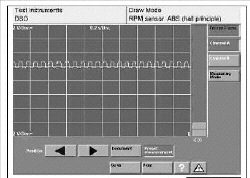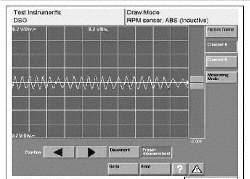Affected Vehicles:
1996-2001 A4
1998-2004 A6
2000-’05 Allroad Quattro
1998-2002 A8
ABS activates when braking lightly or control noises are heard from the ABS unit at low speed without brake application. This may be caused if an ABS control takes place without the flashing of the ESP lamp and, therefore, without ESP operation.
• This is purely an ABS action.
• The ESP sensors have no influence on this.
The following may be the cause for incorrect wheel speed values:
• Damaged wires from the wheel speed sensor to the ABS control unit.
• Tires of unequal size or greatly unevenly worn tires.
• Slight cracks in the ABS rotors (especially on older vehicles).
• Dirty or incorrectly adjusted wheel speed sensors.
Service:
Do not replace any components until the following has been performed.
Tip: DTCs may not be stored in the ABS control module, and OBD Read measuring value block 1 may not show any deviation in the wheel speed value.
1. Thoroughly check the ABS for any cracks, debris or damage to ensure proper operation.
Note: Since slight cracks may be hard to detect with a naked eye, use an oscilloscope.
2. Using an oscilloscope (VAS 5051), check the wheel speed values.

– Curve and frequency must be smooth and uninterrupted as shown in Fig. 1.
– A short disruption (such as a scratch or a notch) in the curve of the DSO picture that is repeated periodically may indicate a damaged ABS rotor. See Fig. 2. If a short disruption is observed, inspect the ABS rotor for damage. The ABS rotor may be located on the outer CV joint, the wheel hub or the inside of the brake disc. (See Repair manual >> Group 45 – Anti-lock brake system).

Courtesy of ALLDATA.













